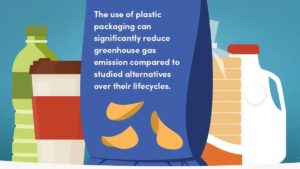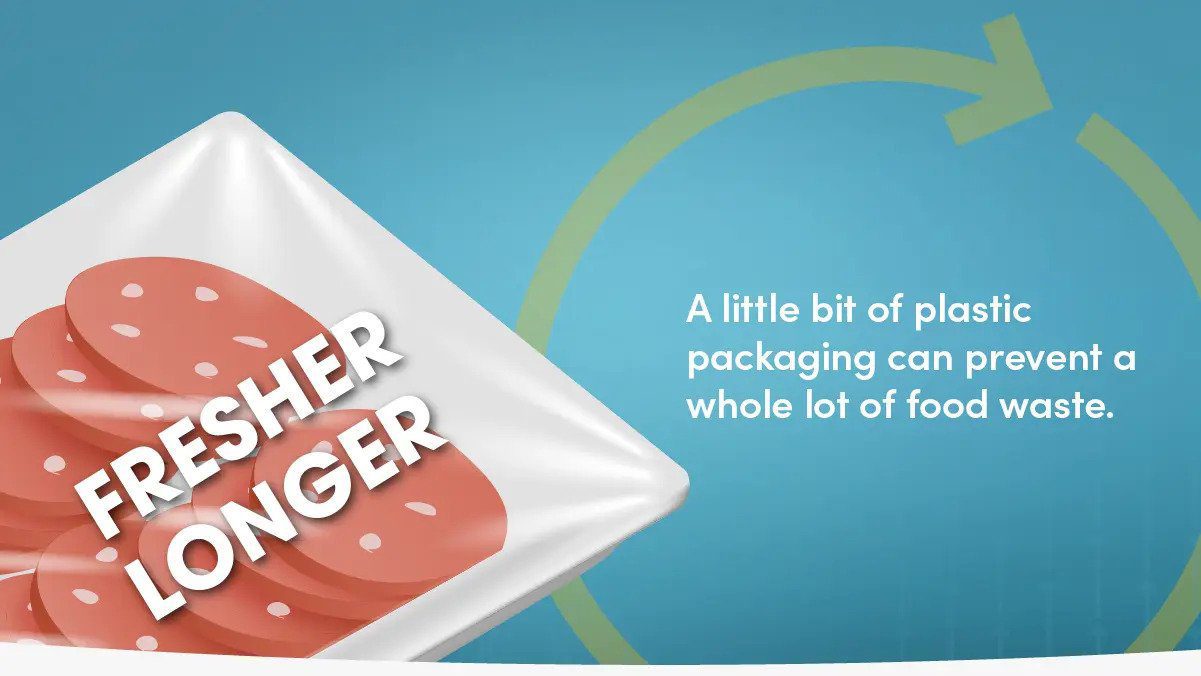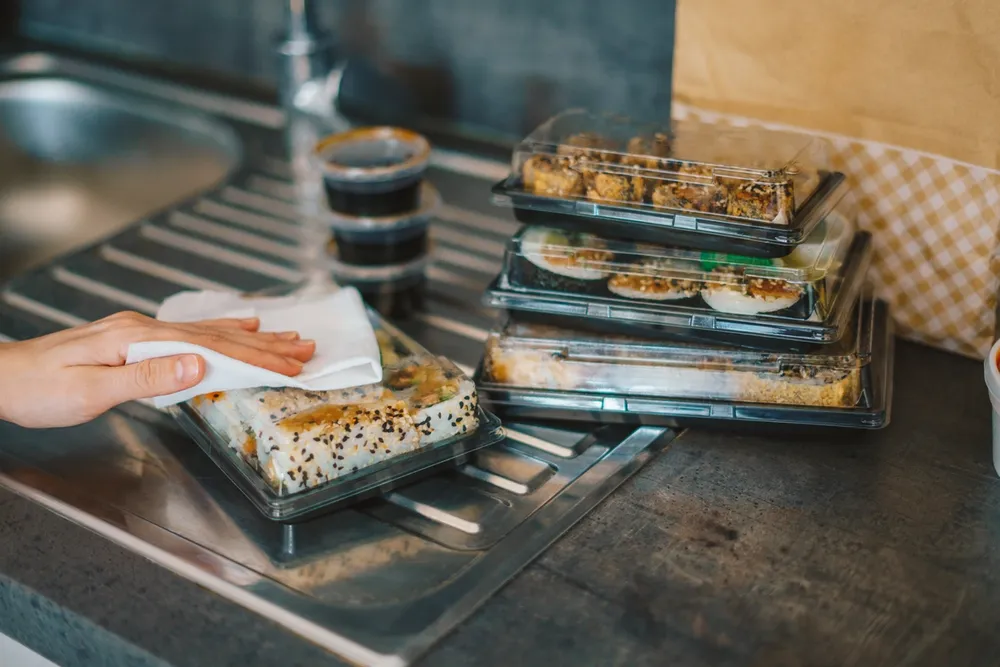The daily news now reminds us of the human tragedies triggered by our warming climate.
Focusing our collective attention during Climate Week 2021 can help by raising awareness. But to protect our habitat, all of us must take concrete steps to reduce greenhouse gas emissions, globally and locally. We need to continuously drive down emissions from our cars, our homes and buildings, our energy sources and even our food and everyday products and packaging.
And in the search for solutions for a lower carbon future, a seemingly unexpected remedy to reduce greenhouse gas emissions continues to pop up.
Plastics.
Unexpected, right? The material that (today) is produced mostly from energy sources can actually help us drive down greenhouse gas emissions in our daily lives.
Based on decades of life cycle analyses that study the environmental impacts of consumer goods, multiple researchers have concluded:

likewise…
Replacing plastics with alternatives in many applications would significantly increase greenhouse gas emissions.
Here’s why: Plastics are lightweight yet strong, so less material is needed than alternatives for many similar functions. A 2016 study found that on average over four times more alternative material (by weight) is needed to perform the same functions.
Using less material generally helps reduce greenhouse gas emissions, whether it’s in our cars, our homes or our everyday products and packaging. Plus, modern plastics can help us move towards a future with lower carbon energy sources and reduce the amount of food we waste.
Let’s start by looking at our cars.
To improve fuel efficiency in our cars and trucks, our nation’s automakers have turned more and more to durable, lightweight plastic to decrease the weight of car parts, which reduces fuel use and drives down greenhouse gas emissions. Most of today’s cars are made of about 50% plastic by volume but only 10% by weight.
As the U.S. Department of Energy notes: “A 10% reduction in vehicle weight can result in a 6% – 8% fuel economy improvement.”
Replacing plastics in passenger vehicles with alternative materials (e.g., various metals) would increase weight by 230% and increase fuel consumption in North America alone by 89 million gallons over vehicle lifetimes (2015 data).
“Lightweighting” also will help us increase the range of lower-carbon electric vehicles. For example, EV batteries – which today typically comprise about a third of vehicle mass – continue to shed weight in part due to lightweight plastic battery packs.
And plastics will be critically important to create the nationwide charging stations that need to be impact and corrosion resistant and able to withstand most nasty weather conditions.
Now our homes
Our homes and buildings use nearly 40% of our nation’s energy. To drive down energy use and greenhouse gas emissions, newer construction practices rely heavily on energy-saving plastic building materials that improve insulation performance (R-value) and limit unwanted airflow. Plastic building products – foam insulation, house wrap, window frames and caulks/sealants – play crucial roles toward sealing a building against heating and air conditioning losses.
For example, a 2021 study found that if all U.S. single-family homes used plastic spray foam insulation, the reduction in greenhouse gas emissions would be equivalent to taking nearly 40 million cars off the road each year – and it would reduce greenhouse gas emissions related to home heating/cooling by a whopping 40%.
Next: the everyday things we buy and package (plus recycling)
Plastic packaging illustrates the strong-yet-lightweight benefits of plastics. Lightweight plastic packaging typically delivers more food or drink per pound and per unit than common alternatives. For example, plastics are used to package more than 50% of typical consumer goods but make up only 17% of all packaging by weight.
Studies find similar strong-yet-lightweight benefits in common plastic products, which often results in less greenhouse gas emissions.
How much less? While studies vary somewhat, research typically shows that use of plastic packaging and products results in approximately 2.5 times less greenhouse gas emissions than alternatives.
And recycling plastics drives down greenhouse gas emissions even further by replacing the need to extract natural resources, transport them long distances and turn them into feedstocks for making plastic… and the greenhouse gas emissions associated with that process.
Plus, advanced recycling technologies can dramatically expand the types and amounts of plastics recycled, which can further reduce greenhouse gas emissions.
Our lower carbon energy sources
For wind power to expand as a lower-carbon energy source, our nation needs a growing supply of highly advanced, strong yet lightweight wind turbine blades, some of which are longer than a football field. Most modern turbine blades are made from various lightweight plastic composites, such as fiberglass (a mix of glass fibers and plastic) and carbon fiber-reinforced plastic. To drive down greenhouse gas emissions further, engineers continue to look for new ways to create lighter, more efficient blades, most of which involve modern plastics.
Plastics also are playing a growing role in improving the efficiency and cost effectiveness of solar energy. Today’s solar panels rely on multiple plastic components, such as plastic films/sheets that help protect glass and silicon panels from the environment, electrical insulators, pipes, valves and fittings. Plus, advances in developing plastic solar cells could make them more affordable, flexible, lightweight and durable.
What about food waste?
The number one material by weight headed to landfills today is no longer paper – it’s food. And with food waste comes an enormous amount of greenhouse gas emissions. The United Nations estimated that if food waste were a country, it would be the third largest emitter of greenhouse gases, behind China and the United States.

Thin, lightweight plastic packaging helps extend the useful life of our food, which helps reduce greenhouse gas emissions (e.g., methane) from food waste. Plastic packaging can provide barriers to oxygen, light, temperatures, moisture, microbes, critters and dirt, which can slow spoilage.
One example: wrapping a cucumber can double or triple its fresh life. Research also shows that growing a cucumber results in 450 times more greenhouse emissions than the lightweight plastic wrap that helps protect it from spoiling.
Driving down greenhouse gas emissions = a lower carbon future
Simply put, plastics do their job more efficiently than alternatives in many functions, which helps drive down greenhouse gas emissions. Plastics help us do more with less and are critical to achieving a lower carbon future and the UN Sustainable Development Goals.
Realistically, the global community will need the help of plastics to meet its climate change commitments.
Click here for more examples of how plastics help drive down greenhouse gas emissions and can lead to a lower carbon future.

